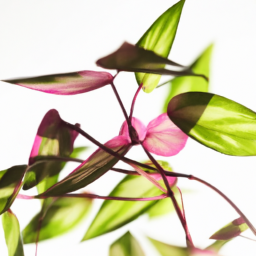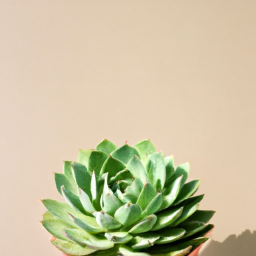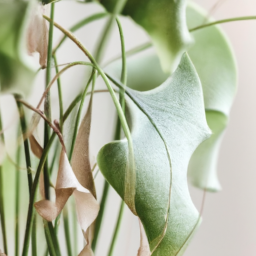
Have you ever wondered why certain colors make you feel calm and relaxed, while others energize and uplift you? It’s fascinating how colors have the ability to evoke specific emotions and impact our mood. In this blog post, we will explore the power of plant color psychology and how the vibrant hues found in nature can influence our well-being. From the soothing greens of lush foliage to the invigorating reds of blooming flowers, plants possess a remarkable ability to communicate with us through their colors. So, let’s dive into the world of plant color psychology and discover how we can harness the transformative power of nature’s palette to enhance our lives.
The Power of Plant Color Psychology
The Impact of Green: Exploring the Psychological Effects of Green Plants on Human Emotions
Welcome to the fascinating world of plant color psychology! In this article, we will delve into the profound impact that green plants have on human emotions. From calming our minds to boosting our creativity, the color green holds incredible power when it comes to our psychological well-being.
The Soothing Effects of Green
Green, often associated with nature and tranquility, has a remarkable ability to soothe our minds and create a sense of harmony. When we surround ourselves with green plants, we tap into the calming energy they emit. This color has been scientifically proven to reduce stress levels, lower blood pressure, and promote relaxation.
One reason for the calming effects of green plants is their association with nature. Being in nature has been shown to have numerous psychological benefits, such as improved mood and increased focus. By bringing green plants indoors, we can recreate a small piece of nature within our living spaces, providing us with a sanctuary of peace and serenity.
Furthermore, the color green is often linked to feelings of renewal and growth. When we see green plants thriving and flourishing, it can inspire a sense of optimism and hope within us. This rejuvenating effect can help alleviate feelings of sadness or anxiety, leaving us feeling refreshed and revitalized.
Boosting Creativity with Green Plants
Not only does green have a calming influence on our emotions, but it also has the power to stimulate our creativity. Research has shown that exposure to the color green can enhance our cognitive abilities, including problem-solving skills and idea generation.
When we surround ourselves with green plants, our brain is subconsciously triggered to associate the color with growth and abundance. This association can help remove mental blocks and open up our minds to new possibilities. Whether you’re an artist, writer, or simply looking for a creative spark, incorporating green plants into your environment can provide the inspiration you need.
Moreover, the presence of green plants in workspaces has been found to increase productivity and focus. The color green can help reduce mental fatigue and improve concentration, allowing us to perform at our best. Whether you’re studying for an exam or working on a challenging project, having green plants nearby can give you the mental boost you need to excel.
Choosing the Right Green Plants for Your Space
Now that we understand the psychological effects of green plants, let’s explore some popular options to incorporate into your living or working environment:
1. Snake Plant (Sansevieria Trifasciata): This plant is known for its air-purifying properties and its ability to thrive in low light conditions. It’s an excellent choice for bedrooms or offices.
2. Pothos (Epipremnum Aureum): Pothos is a versatile plant that can be grown in water or soil. It has cascading vines that add a touch of elegance to any space. It’s an ideal plant for hanging baskets or shelves.
3. Peace Lily (Spathiphyllum): With its beautiful white flowers, the peace lily adds a touch of serenity to any room. It’s known for its ability to purify the air and is perfect for bedrooms or living rooms.
Remember, when choosing green plants for your space, consider factors such as lighting conditions, maintenance requirements, and personal preferences. The goal is to create a nurturing environment that promotes well-being and enhances your emotional state.
In conclusion, the power of plant color psychology, particularly the impact of green plants on human emotions, is truly remarkable. By incorporating green plants into our surroundings, we can experience a sense of tranquility, boost our creativity, and improve our overall well-being. So why not bring a little piece of nature into your life and harness the incredible power of green plants?

Harnessing the Energizing Power of Yellow Plants: Understanding the Psychological Benefits
Welcome to the fascinating world of plant color psychology! In this article, we will explore the incredible power of yellow plants and their impact on our emotions and well-being. Yellow, often associated with sunshine and happiness, has the ability to uplift our spirits and energize our minds. By understanding the psychological benefits of yellow plants, we can harness their power to create a positive and vibrant environment.
The Psychological Impact of Yellow Plants
Yellow plants have a unique ability to stimulate our senses and evoke a range of emotions. The color yellow is often associated with joy, optimism, and warmth. When we encounter yellow plants, whether it’s a vibrant sunflower or a delicate daffodil, our brains respond by releasing dopamine, a neurotransmitter that promotes feelings of pleasure and happiness.
Research has shown that exposure to yellow plants can improve our mood, increase our energy levels, and even enhance our cognitive performance. The bright and cheerful nature of yellow plants stimulates our brain’s reward system, leading to a boost in motivation, creativity, and focus. Whether we have a yellow plant in our workspace or simply spend time surrounded by nature, the presence of yellow can have a profound impact on our psychological well-being.
Furthermore, yellow plants have been found to alleviate symptoms of depression and anxiety. The vibrant color stimulates the production of serotonin, a neurotransmitter that regulates mood and promotes feelings of calmness and happiness. By incorporating yellow plants into our living spaces or spending time outdoors in nature, we can create a soothing and uplifting environment that supports our mental health.
Creating a Positive Environment with Yellow Plants
Now that we understand the psychological benefits of yellow plants, let’s explore how we can harness their power to create a positive and energizing environment.
1. Choose the right yellow plants: When selecting yellow plants for your space, consider their size, maintenance requirements, and the specific ambiance you want to create. Sunflowers, daffodils, marigolds, and yellow roses are popular choices that can add a vibrant touch to any room or garden.
2. Placement and arrangement: Once you have chosen your yellow plants, strategically place them in areas where you spend the most time. For example, having a yellow plant on your desk or near a window can infuse your workspace with energy and positivity. Consider creating a focal point by arranging a cluster of yellow plants together, creating a captivating display of color and life.
3. Complement with other colors: Yellow plants can be complemented with other colors to create a harmonious and visually appealing environment. Pairing yellow plants with shades of green, such as ferns or succulents, can create a refreshing and calming atmosphere. Additionally, incorporating pops of contrasting colors like blue or purple can create a dynamic and stimulating space.
4. Mindful appreciation: Take a moment each day to appreciate the beauty and energy of your yellow plants. Engage your senses by observing their vibrant hues, inhaling their delicate scents, and feeling the texture of their leaves. Practicing mindfulness and gratitude towards your yellow plants can further enhance their psychological benefits and promote a sense of connection with nature.
Conclusion
The power of yellow plants in harnessing our emotions and promoting psychological well-being is truly remarkable. By understanding the psychological benefits of yellow plants, we can intentionally incorporate them into our living spaces and reap the rewards of their energizing and uplifting effects. So, why not surround yourself with the vibrant beauty of yellow plants and experience the positive transformation they can bring to your life?

The Calming Influence of Blue Plants: How Different Shades of Blue Affect Mood and Well-being
As an expert in the field of plant color psychology, I am here to shed light on the powerful influence of blue plants and how different shades of blue can affect our mood and well-being. Blue, often associated with tranquility and calmness, has a unique ability to create a soothing atmosphere in any space. Let’s explore the fascinating world of blue plants and their impact on our emotions and overall sense of well-being.
The Psychological Impact of Blue
Blue is a color that is often associated with feelings of peace, serenity, and relaxation. It has a calming effect on our minds and bodies, making it an ideal choice for creating a tranquil environment. When we surround ourselves with blue, whether it be in the form of plants or other elements, it can help reduce stress and anxiety, promote better sleep, and improve overall mental well-being.
Research has shown that exposure to blue light can help regulate our circadian rhythm, the internal clock that controls our sleep-wake cycle. This is why spending time in a blue-hued space, whether it’s outdoors surrounded by blue plants or indoors with blue decor, can have a positive impact on our sleep quality and overall mood.
Furthermore, blue is also associated with feelings of trust, loyalty, and stability. It can evoke a sense of reliability and dependability, making it an excellent choice for creating a sense of security and calmness in any environment. Blue plants can help create a welcoming and soothing atmosphere, whether it’s in our homes, offices, or outdoor spaces.
The Different Shades of Blue and Their Effects
While blue as a whole is known for its calming influence, different shades of blue can evoke slightly different emotions and have varying effects on our well-being. Let’s explore some of the most common shades of blue found in plants and their unique characteristics:
1. Sky Blue: Sky blue is a light and airy shade that often reminds us of clear skies and sunny days. It has a refreshing and uplifting effect on our mood, promoting feelings of positivity and optimism. Sky blue plants, such as forget-me-nots or blue hydrangeas, can be excellent choices for creating a cheerful and calming ambiance.
2. Navy Blue: Navy blue is a deep and rich shade that exudes elegance and sophistication. It has a grounding effect on our emotions, promoting a sense of stability and security. Navy blue plants, such as delphiniums or blue irises, can add a touch of refinement to any space while still maintaining a calming atmosphere.
3. Teal Blue: Teal blue is a unique shade that combines the calming properties of blue with the rejuvenating qualities of green. It promotes a sense of balance and harmony and is often associated with emotional healing and renewal. Teal blue plants, such as succulents or blue-green ferns, can bring a sense of tranquility and vitality to any environment.
Creating a Calming Blue Plant Oasis
Now that we understand the psychological impact of blue and the different shades it can come in, let’s explore how we can create a calming blue plant oasis in our own spaces:
1. Choose the Right Plants: Select plants that have blue or blue-green foliage or flowers. Some popular options include blue hydrangeas, forget-me-nots, delphiniums, blue irises, and succulents with blue-green leaves. Consider the lighting conditions of your space and choose plants that thrive in those conditions.
2. Create a Harmonious Color Scheme: Pair your blue plants with complementary colors to create a harmonious and visually appealing space. Shades of green, white, and purple can work well with blue plants, enhancing their calming effect. Experiment with different combinations to find what resonates with you.
3. Pay Attention to Placement: Strategically place your blue plants in areas where you want to create a calming atmosphere. Consider incorporating them into your bedroom for better sleep, your living room for relaxation, or your office for increased focus and productivity.
4. Incorporate Blue Elements: In addition to blue plants, consider adding other blue elements to your space, such as blue artwork, cushions, or curtains. This will further enhance the calming effect and create a cohesive and serene environment.
5. Practice Mindfulness: Take the time to connect with your blue plants and appreciate their beauty. Engage in mindful activities like watering, pruning, or simply observing them. This will not only deepen your connection with nature but also promote a sense of calm and well-being.
In conclusion, the power of plant color psychology is truly remarkable, especially when it comes to blue plants. By understanding the psychological impact of blue and the different shades it can come in, we can harness its calming influence to create a serene and tranquil environment. Whether it’s through sky blue, navy blue, or teal blue plants, incorporating shades of blue into our spaces can have a profound effect on our mood, well-being, and overall quality of life.
Let’s bring it all home
Plants have long been admired for their beauty and ability to bring life to any space, but did you know that they can also have a profound impact on our emotions and well-being? It turns out that the colors of plants play a significant role in our psychological state, influencing our moods and even boosting our productivity. This fascinating concept is known as plant color psychology, and it’s a powerful tool that can be harnessed to create a harmonious and uplifting environment.
Green, for instance, is the color most commonly associated with plants, and it has a calming effect on our minds. Studies have shown that being surrounded by greenery can reduce stress levels and promote relaxation. This is why incorporating plants into your workspace or home can be incredibly beneficial, especially if you’re looking to create a sense of tranquility and peace. On the other hand, vibrant and bold colors like red and orange can stimulate our senses and increase energy levels. These hues are great for areas where you want to foster creativity and motivation, such as an art studio or a home office. By understanding the power of plant color psychology, you can strategically choose the right plants and colors to enhance your well-being and create a space that aligns with your desired mood and atmosphere.
Frequently Asked Questions from our readers:
Q1: What is plant color psychology?
A1: Plant color psychology is the study of how different colors found in plants can affect our emotions, moods, and behaviors. It explores the psychological and physiological responses that humans have to various colors present in nature.
Q2: How does plant color psychology impact our well-being?
A2: Plant color psychology suggests that exposure to certain colors found in plants can have a profound impact on our well-being. For example, vibrant and warm colors like red, orange, and yellow can evoke feelings of energy, happiness, and enthusiasm. On the other hand, cool colors like blue and green can promote a sense of calmness, relaxation, and tranquility.
Q3: Can plant colors influence our productivity and focus?
A3: Yes, plant colors can indeed influence our productivity and focus. Research suggests that the color green, commonly found in plants, can enhance concentration and focus. It is believed to have a soothing effect on our minds, reducing mental fatigue and improving cognitive performance. Incorporating greenery into our surroundings can create a more conducive environment for work or study.
Q4: Are there specific plant colors that can uplift our mood?
A4: Absolutely! Certain plant colors have been associated with uplifting moods. Bright and cheerful colors like yellow and orange are known to stimulate feelings of happiness, optimism, and positivity. Additionally, vibrant shades of pink and purple can evoke a sense of joy and playfulness. Surrounding ourselves with plants showcasing these colors can help improve our overall mood and outlook.
Q5: How can I incorporate plant color psychology into my surroundings?
A5: There are several ways to incorporate plant color psychology into your surroundings. You can start by selecting plants with colors that align with the emotional and psychological effects you desire. For instance, if you want to create a calming atmosphere, opt for plants with green foliage. If you seek energy and vibrancy, choose plants with red or yellow flowers. Additionally, you can use plant color psychology to guide your choice of paint colors, decor, or even clothing, allowing you to create a harmonious and mood-enhancing environment.
Emily Bloomfield is an interior designer and horticulturist specializing in incorporating indoor plants into interior spaces. With a background in both design and plant science, Emily offers a unique perspective on creating harmonious living environments through the synergy of greenery and aesthetics. Her creative ideas and innovative solutions make her a sought-after authority in the field.


